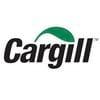Multiprotease supplementation in laying hen diets: Impact on performance, egg quality, digestibility, gut histomorphology, and sustainability
Laying hen responses to supplemental multiprotease on performance, egg quality, digestibility, gut histomorphology, nitrogen excretion, and economic performance of laying hens until 37 weeks of age were investigated. A total of 189 25-week-old Hy-Line Brown hens were housed in enriched cages (7 birds/cage) and randomly allocated to 1 of 3 diets with 9 replicates per treatment. Dietary treatments included: an adequate positive control- PC [met the breed and age standards for crude protein (CP) and amino acids (AA)]; negative control- NC (90 % CP and AA requirement); and NC supplemented with multiprotease – NCMP. Multiprotease was supplemented at 300 g/t of feed equating to 2400 U/kg. Egg production rate and feed intake were not altered (P > 0.10) by the dietary treatments. Between 25 and 37 weeks of age (woa), the NCMP diet reduced the feed conversion ratios by 3 % (1.91 vs 1.97; P < 0.05) in comparison to the NC diet while improving (P < 0.05) the egg weights by 3 % (58.56 vs 56.68); Haugh units by 2 % (91.78 vs 90.20); and breaking strength by 1 % (4.65 vs 4.61). Marginally intensified yolk color and albumen height (P < 0.10) were also observed with the NCMP diet. Furthermore, the NCMP diet marginally improved the villus height, width, and absorptive surface area (P < 0.10) relative to NC. Multiprotease-supplemented NCMP diet improved (P < 0.05) the digestibility of crude protein; and amino acids including lysine, methionine, phenylalanine, isoleucine, leucine, glutamine, tyrosine, relative to the NC diet. Lowered AA/CP diets (NC and NCMP) reduced the N excreted and feed costs (P < 0.05) relative to the PC diet. Multiprotease increased the returns on investment (P < 0.10), and nitrogen retained in egg (P < 0.05) from 25- 37woa. Conclusively, feeding reduced CP/AA diets maintained the egg production rate while reducing the N excreted and feed costs. Multiprotease modulation of ileal absorptive capacity and nutrient digestibility is linked to improved feed efficiency, egg quality, and revenue estimates of supplemented hens.
Keywords: Egg quality Digestibility Laying hen Performance Protease
Introduction
Materials and methods
Birds, and housing
Experimental diets

Experimental procedures and sample collection
Sample processing and laboratory analyses
Calculations




Statistical analyses
Results



Growth and productive performance
Internal egg and eggshell quality

Ileal nutrient digestibility and histomorphology
Nitrogen balance
Economic performance


Discussion
Declaration of competing interest
Acknowledgements
Aderibigbe, A.S., Wise, T.L., Davis, J.D., Naranjo, V.D., Hess, V., Dozier, W.A., 2024. Effects of reduced crude protein diets while maintaining essential amino acid concentrations on growth performance, nitrogen output, ammonia production, and meat yield. Poult. Sci. 103, 103572.
AOAC International, 2006. Official Methods of Analysis, 18th ed. Rev. 2. AOAC Int., Gaithersburg, MD, USA.
AOAC International, 2007. Official Methods of Analysis, 18th ed. Rev. 2. AOAC Int., Gaithersburg, MD, USA.
Barbosa, S.A.P.V., Correa, G.S.S., Correa, A.B., de Oliveira, C.F.S., Vieira, B.S., de Figueiredo, E.M., Junior, J.G.C., Neto, H.R.L., 2020. Effects of different proteases on commercial laying hens at peak production. Rev. Bras. Zootec. 49, 1–10.
Barekatain, R., Nattrass, G., Tilbrook, A.J., Chousalkar, K., Gilani, S., 2019. Reduced protein diet and amino acid concentration alter intestinal barrier function and performance of broiler chickens with or without synthetic glucocorticoid. Poult. Sci. 98, 3662–3675.
Barzegar, S., Wu, S.B., Noblet, J., Choct, M., Swick, R.A., 2019. Energy efficiency and net energy prediction of feed in laying hens. Poult. Sci. 98, 5746–5758.
Cabezas-Garcia, E.H., Rodríguez-Aguilar, D.E., Afanador-T´ellez, G., 2022. Individual egg production of Hy-Line Brown hens during the early laying phase in response to dietary CP levels. Animal 1, 100027.
Cai, P., Liu, S., Tu, Y., Fu, D., Zhang, W., Zhang, X., Zhou, Y., Shan, T., 2024. Effects of different supplemental levels of protease DE200 on the production performance, egg quality, and cecum microflora of laying hens. J. Anim. Sci. 102.
Chen, X., Ma, W., Hu, N., Yan, Y., Zhu, Y., Wang, Z., Jiao, G., Chen, X., 2021. Effects of alkaline protease on the production performance, egg quality, and cecal microbiota of hens during late laying period. Anim. Sci. J. 92, 1–11.
Cho, H.M., Hong, J.S., Kim, Y.B., Nawarathne, S.R., Choi, I., Yi, Y.J., Wu, D., Lee, H., Han, S.E., Nam, K.T., Seoung, E.I., Heo, J.M., 2020. Responses in growth performance and nutrient digestibility to a multi-protease supplementation in amino acid deficient broiler diets. J. Anim Sci. Technol. 62, 840–853.
Cowieson, A.J., Roos, F.F., 2016. Toward optimal value creation through the application of exogenous mono-component protease in the diets of non-ruminants. Anim. Feed Sci. Technol. 221 (331), 340.
Cowieson, A.J., Zaefarian, F., Knap, I., Ravindran, V., 2017. Interactive effects of dietary protein concentration, a mono component exogenous protease and ascorbic acid on broiler performance, nutritional status and gut health. Anim. Prod. Sci. 57, 1058–1068.
Cowieson, A.J., Lu, H.., Ajuwon, K.M., Knap, I., Adeola, O., 2016. Interactive effects of dietary protein source and exogenous protease on growth performance, immune competence and jejunal health of broiler chickens. Anim. Prod. Sci. 57, 251–261.
Cowieson, A.J., Perez-Maldonado, R., Kumar, A., Toghyani, M., 2020. Possible role of available phosphorus in potentiating the use of low-protein diets for broiler chicken production. Poult. Sci. 99, 6954–6963.
Dao, H.T., Moss, A.F., Bradbury, E.J., Swick, R.A., 2022a. Bone measurements of arginine deficient broilers growing under warm temperatures. Trop. Anim. Sci. J. 45, 356–367.
Dao, H.T., Moss, A.F., Bradbury, E.J., Swick, R.A., 2022b. Bone mineralisation status of broilers fed reduced-protein diets supplemented with L-arginine, guanidinoacetic acid and L-citrulline. Anim. Prod. Sci. 62, 539–553.
De Cesare, A., Faria do Valle, I., Sala, C., Sirri, F., Astolfi, A., Castellani, G., Manfreda, G., 2019. Effect of a low protein diet on chicken ceca microbiome and productive performances. Poult. Sci. 98, 3963–3976.
De Cloet, C.A., Maina, A.N., Schulze, H., Bedecarrats, G.Y., Kiarie, E.G., 2023. Egg production, egg quality, organ weight, bone ash and plasma metabolites in 30-weekold Lohmann LSL lite hens fed corn and soybean meal-based diets supplemented with enzymatically treated yeast. Poult. Sci. 102, 102527.
dePersio, S., Utterback, P.L., Utterback, C.W., Rochell, S.J., O’Sullivan, N., Bregendahl, K., Arango, J., Parsons, C.M., Koelkebeck, K.W., 2015. Effects of feeding diets varying in energy and nutrient density to Hy-Line W-36 laying hens on production performance and economics. Poult. Sci. 94, 195–206.
Ding, X.M., Li, D.D., Li, Z.R., Wang, J.P., Zeng, Q.F., Bai, S.P., Su, Z.W., Zhang, K.Y., 2016. Effects of dietary crude protein levels and exogenous protease on performance, nutrient digestibility, trypsin activity and intestinal morphology in broilers. Livest. Sci. 193, 26–31.
Dong, X.Y., Azzam, M.M.M., Zou, X.T., 2017. Effects of dietary threonine supplementation on intestinal barrier function and gut microbiota of laying hens. Poult. Sci. 96, 3654–3663.
Duque-Ramírez, C.F., Javierre, J.A., Penuela-Sierra, ˜ L.M., Diaz-Vargas, M., 2023. Effect of exogenous protease on performance, nutrient digestibility, intestinal histomorphometric, meat quality characteristics, carcass yield in broilers fed low protein diets. Trop. Anim. Health Prod. 55, 190.
Elling-Staats, M.L., Gilbert, M.S., Smidt, H., Kwakkel, R.P., 2022. Caecal protein fermentation in broilers: a review. Worlds. Poult. Sci. J. 78, 103–123.
European Commission, 1999. Council Directive 19999/74/EC laying down minimum standards for the protection of laying hens. Off. J. Eur. Comm. 26, 0053–0057.
Fenton, T.W., Fenton, M., 1979. An improved method for chromic oxide determination in feed and feces. Can. J. Anim. Sci. 59, 631–634.
Fouad, A.M., El-Senousey, H.K., 2014. Nutritional factors affecting abdominal fat deposition in poultry: a review. Asian-Australas. J. Anim. Sci. 27, 1057–1068.
Freitas, D.M., Vieira, S.L., Angel, C.R., Favero, A., Maiorka, A., 2011. Performance and nutrient utilization of broilers fed diets supplemented with a novel mono-component protease. J. Appl. Poult. Res. 20, 322–334.
Heo, J.M., Opapeju, F.O., Pluske, J.R., Kim, J.C., Hampson, D.J., Nyachoti, C.M., 2013. Gastrointestinal health and function in weaned pigs: a review of feeding strategies to control post-weaning diarrhoea without using in-feed antimicrobial compounds. J. Anim. Physiol. Anim. Nutr. 97, 207–237.
Heo, Y.J., Park, J.., Kim, Y.B., Kwon, B.Y., Kim, D.H., Song, J.Y., Lee, K.W., 2023. Effects of dietary protein levels on performance, nitrogen excretion, and odor emission of growing pullets and laying hens. Poult. Sci. 102, 102798.
Hincke, M.T., Nys, Y., Gautron, J., Mann, K., Rodriguez-Navarro, A.B., Mckee, M.D., 2012. The eggshell: structure, composition and mineralization. Front. Biosci. 17, 1266–1280.
Huang, C.X., Guo, Y.M., Yuan, J.M., 2014. Dietary taurine impairs intestinal growth and mucosal structure of broiler chickens by increasing toxic bile acid concentrations in the intestine. Poult. Sci. 93, 1475–1483.
Hy-Line Brown Commercial Layers. 2024. Management Guide. Accessed Aug. 29, 2024. Available from https://www.hyline.com/filesimages/Hy-Line-Products/Hy-Line-Pro duct-PDFs/Brown/BRN%20STD%20ENG.pdf.
Ji, F., Fu, S., Ren, B., Wu, S., Zhang, H., Yue, H., Gao, J., Helmbrecht, A., Qi, G., 2014. Evaluation of amino-acid supplemented diets varying in protein levels for laying hens. J. Appl. Poult. Res. 23, 384–392.
Jones, D., 2012. Haugh unit: gold standard of egg quality. USDA ARS. Accessed Sep. 2024. https://www.ars.usda.gov/research/publications/publication/?seqNo 115=280843.
Kalmendal, R., Tauson, R., 2012. Effects of a xylanase and pro tease, individually or in combination, and an ionophore coccidiostat on performance, nutrient utilization, and intestinal morphology in broiler chickens fed a wheat-soybean meal-based diet. Poult. Sci. 91, 1387–1393.
Kim, J.H., Lee, H.K., Yang, T.S., Kang, H.K., Kil, D.Y., 2019. Effect of different sources and inclusion levels of dietary fat on productive performance and egg quality in laying hens raised under hot environmental conditions. Asian-Australas. J. Anim. Sci. 32, 1407–1413.
Lee, J., Oh, H., Kim, Y., Song, D., An, J., Chang, S., Go, Y., Cho, H., Lee, B., Kim, W.K., Cho, J., 2023. Effects of exogenous protease on performance, economic evaluation, nutrient digestibility, fecal score, intestinal morphology, blood profile, carcass trait, and meat quality in broilers fed normal diets and diets considered with matrix value. Poult. Sci. 102, 102565.
Lee, J., Yu, M.H., Oketch, E.O., Nawarathne, S.R., Kim, Y.B., Chathuranga, N.C., Maniraguha, V., Sta Cruz, B.G., Seo, E., Park, H., Choi, H., Yu, D.J., Kim, J.K., Heo, J. M., 2024. Effect of dietary protein levels and age on growth performance, total excreta and nitrogen balance of laying hens during the growing phase. Korean J. Agric. Sci. 51, 193–203.
Li, P., Wang, R., Jiao, H., Wang, X., Zhao, J., Lin, H., 2018. Effects of dietary phosphorus level on the expression of calcium and phosphorus transporters in laying hens. Front. Physiol. 9, 627.
Li, X., Wang, C., Li, S., Zhang, L., Liao, X., Lu, L., 2024. Low protein diet influences mineral absorption and utilization in medium-growing yellow-feathered broilers from 1 to 30 days of age. Poult. Sci. 103, 104512.
Liu, S.Y., Selle, P.H., Court, S.G., Cowieson, A.J., 2013. Protease supplementation of sorghum-based broiler diets enhances amino acid digestibility coefficients in four small intestinal sites and accelerates their rates of digestion. Anim. Feed Sci. Technol. 183, 175–183.
Macelline, S.P., Toghyani, M.., Chrystal, P.V., Selle, P.H., Liu, S.Y., 2021. Amino acid requirements for laying hens: a comprehensive review. Poult. Sci. 100, 101036.
Miranda, J.M., Anton, X., Redondo-Valbuena, C., Roca-Saavedra, P., Rodriguez, J.A., Lamas, A., Franco, C.M., Cepeda, A., 2015. Egg and egg-derived foods: effects on human health and use as functional foods. Nutrients 7, 706–729.
Nannoni, E., Buonaiuto, G., Martelli, G., Lizzi, G., Trevisani, G., Garavini, G., Sardi, L., 2022. Influence of increased freedom of movement on welfare and egg laying pattern of hens kept in aviaries. Animals 12, 2307.
Ndazigaruye, G., Kim, D.H., Kang, C.W., Kang, K.R., Joo, Y.-J., Lee, S.R., Lee, K.W., 2019. Effects of low-protein diets and exogenous protease on growth performance, carcass traits, intestinal morphology, cecal volatile fatty acids and serum parameters in broilers. Animals 9, 226.
Neves, D.P., Banhazi, T.M., N¨ aas, ¨ I.A., 2014. Feeding behaviour of broiler chickens: a review on the biomechanical characteristics. Rev. Bras. Cienc. Avic. 16, 01–16.
Novak, C., Yakout, H.M., Scheideler, S.E., 2006. The effect of dietary protein level and total sulfur amino acid: lysine ratio on egg production parameters and egg yield in Hy-Line W-98 hens. Poult. Sci. 85, 2195–2206.
Nys, Y., Schlegel, P., Durosoy, S., Jondreville, C., Narcy, A., 2018. Adapting trace mineral nutrition of birds for optimising the environment and poultry product quality. Worlds Poult. Sci. J. 74, 225–238.
Oketch, E.O., Kim, Y.B., Yu, M., Cho, H.M., Hong, J.S., Nawarathne, S.R., Wickramasuriya, S.S., Heo, J.M., 2023a. Research note: evaluation of standardized ileal amino acid digestibility in feed ingredients for Pekin ducks. Poult. Sci. 102, 102899.
Oketch, E.O., Lee, J.W., Yu, M., Hong, J.S., Kim, Y.B., Nawarathne, S.R., Chiu, J.W., Heo, J.M., 2022. Physiological responses of broiler chickens fed reduced-energy diets supplemented with emulsifiers. Anim. Biosci. 35, 1929–1939.
Oketch, E.O., Yu, M.., Hong, J.S., Chaturanga, N.C., Seo, E., Lee, H., Hermes, R.G., Smeets, N., Taechavasonyoo, A., Kirwan, S., Rodriguez-Sanchez, R., Heo, J.M., 2024. Laying hen responses to multi-strain Bacillus-based probiotic supplementation from 25 to 37 weeks of age. Anim. Biosci. 37, 1418–1427.
Oketch, E.O., Wickramasuriya, S.S., Oh, S., Choi, J.S., Heo, J.M., 2023b. Physiology of lipid digestion and absorption in poultry: an updated review on the supplementation of exogenous emulsifiers in broiler diets. J. Anim. Physiol. Anim. Nutr. 107, 1429–1443.
Olukosi, O.A., Beeson, L.A., Englyst, K., Romero, L.F., 2015. Effects of exogenous proteases without or with carbohydrases on nutrient digestibility and disappearance of non-starch polysaccharides in broiler chickens. Poult. Sci. 94, 2662–2669.
Park, J.H., Lee, S.I., Kim, I.H., 2020. The effect of protease on growth performance, nutrient digestibility, and expression of growth-related genes and amino acid transporters in broilers. J. Anim. Sci. Technol 62, 614–627.
Peebles, E.D., McDaniel, C.D., 2004. Practical Manual for Understanding the Shell Structure of Broiler Hatching Eggs and Measurements of Their Quality [Bulletin 1130]. Mississippi Agricultural and Forestry Experiment Station, Raymond, MS.
Penuela-Sierra, ˜ L.M., Aragao-Neto, ˜ V.L., Lozano-Cruz, P., Mejia-Abaunza, J.N., Ali, M., Cabanas-Ojeda, ˜ J., Yang, Y., Alfaro-Wisaquillo, M.C., Quintana-Ospina, G.A., Vasanthakumari, B.L., Wealleans, A., 2024. Multiprotease improves amino acid release in vitro, energy, and nutrient utilization in broilers fed diets varying in crude protein levels. Poult. Sci. 103, 103546.
Poudel, I., Hodge, V.R., Wamsley, K.G.S., Roberson, K.D., Adhikari, P.A., 2023. Effects of protease enzyme supplementation and varying levels of amino acid inclusion on productive performance, egg quality, and amino acid digestibility in laying hens from 30 to 50 weeks of age. Poult. Sci. 102, 102465.
Poudel, I., Hodge, V.R., Wamsley, K.G.S., Roberson, K.D., Adhikari, P.A., 2024. Effects of protease enzyme supplementation and varying levels of amino acid inclusion on productive performance, egg quality, amino acid digestibility and economics of egg production in Hy-Line W-36 laying hen from 50 to 70 weeks of age. J. Appl. Poult. Res., 100452
Qaisrani, S.N., Moquet, P.C., van Krimpen, M.M., Kwakkel, R.P., Verstegen, M.W., Hendriks, W.H., 2014. Protein source and dietary structure influence growth performance, gut morphology, and hindgut fermentation characteristics in broilers. Poult. Sci. 93, 3053–3064.
Ravindran, V., Hew, L.I., Ravindran, G., Bryden, W.L., 2005. Apparent ileal digestibility of amino acids in dietary ingredients for broiler chickens. Anim. Sci. 81, 85–97.
Ravindran, V., Adeola, O., Rodehutscord, M., Kluth, H., van der Klis, J.D., van Eerden, E., Helmbrecht, A., 2017. Determination of ileal digestibility of amino acids in raw materials for broiler chickens - results of collaborative studies and assay recommendations. Anim. Feed Sci. Technol. 225, 62–72.
Rehman, Z.U., Kamran, J., El-Hack, M.E.A., Alagawany, M., Bhatti, S.A., Ahmad, G., Saleem, A., Ullah, Z., Yameen, R.M.K., Ding, C., 2018. Influence of low-protein and low-amino acid diets with different sources of protease on performance, carcasses and nitrogen retention of broiler chickens. Anim. Prod. Sci. 58, 1625–1631.
Scialla, J.J., Anderson, C.A., 2013. Dietary acid load: a novel nutritional target in chronic kidney disease? Adv. Chronic Kidney D. 20, 141–149.
Walk, C.L., Pirgozliev, V., Juntunen, K., Paloheimo, M., Ledoux, D.R., 2018. Evaluation of novel protease enzymes on growth performance and apparent ileal digestibility of amino acids in poultry: enzyme screening. Poult. Sci. 97, 2123–2138.
Wang, J., Yue, H., Wu, S., Zhang, H., Qi, G., 2017. Nutritional modulation of health, egg quality and environmental pollution of the layers. Anim. Nutr. 3, 91–96.
Wealleans, A.L., Ashour, R., Ishmais, A., Al-Amaireh, S., Gonzalez-Sanchez, D., 2023a. Comparative effects of proteases on performance, carcass traits and gut structure of broilers fed diets reduced in protein and amino acids. J. Anim. Sci. Tech. 66, 457–470.
Wealleans, A., Desbruslais, A., Sanchez, D.G., 2023b. Dietary supplementation of lysolecithin compared to a combination of lysolecithin, synthetic emulsifier and monoglycerides, on laying performance and egg quality of laying hens. In: Page 300 in 23rd European Symposium on Poultry Nutrition, 21-24 June 2023. Rimini, Italy.
Woyengo, T.A., Knudsen, K.E.B., Børsting, C.F., 2023. Low-protein diets for broilers: current knowledge and potential strategies to improve performance and health, and to reduce environmental impact. Anim. Feed Sci. Technol. 297, 115574.
Xing, J., Kang, L., Hu, Y., Xu, Q., Zhang, N., Jiang, Y., 2009. Effect of dietary betaine supplementation on mRNA expression and promoter CpG methylation of lipoprotein lipase gene in laying hens. J. Poult. Sci. 46, 224–228.
Yi, W., Liu, Y., Fu, S., Zhuo, J., Wang, J., Shan, T., 2024. Dietary novel alkaline protease from Bacillus licheniformis improves broiler meat nutritional value and modulates intestinal microbiota and metabolites. Anim. Microbiome 6, 1.
Zaripheh, S., Erdman Jr., J.W., 2002. Factors that influence the bioavailablity of xanthophylls. J. Nutr. 132, 531S–534S.
Zhang, K.K., Han, M.M., Dong, Y.Y., Miao, Z.Q., Zhang, J.Z., Song, X.Y., Feng, Y., Li, H.F., Zhang, L.H., Wei, Q.Y., Xu, J.P., Gu, D.C., Li, J.H., 2021. Low levels of organic compound trace elements improve the eggshell quality, antioxidant capacity, immune function, and mineral deposition of aged laying hens. Animal 15, 100401.















